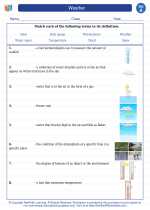Weather Patterns
Weather patterns refer to the recurring atmospheric conditions that occur in a specific region over a period of time. These patterns are influenced by factors such as temperature, air pressure, humidity, and wind. Understanding weather patterns is essential for predicting and preparing for various weather-related events.
Factors Influencing Weather Patterns
1. Temperature: The level of heat in the atmosphere affects weather patterns. Warmer temperatures can lead to the formation of clouds and precipitation, while cooler temperatures can result in clear skies.
2. Air Pressure: Variations in air pressure can cause changes in weather patterns. High pressure often brings fair weather, while low pressure can lead to stormy conditions.
3. Humidity: The amount of moisture in the air plays a crucial role in weather patterns. High humidity levels can lead to the formation of fog, clouds, and precipitation.
4. Wind: The direction and speed of wind can influence weather patterns. Wind patterns can bring in air masses from different regions, affecting temperature and precipitation.
Types of Weather Patterns
1. Seasonal Patterns: Many regions experience predictable weather patterns based on the time of year. For example, summer often brings warm temperatures and increased precipitation, while winter is characterized by cold temperatures and snowfall.
2. Weather Fronts: Frontal boundaries between air masses can result in changes in weather patterns. Cold fronts can bring storms and cooler temperatures, while warm fronts can lead to milder conditions and precipitation.
3. Storm Systems: Certain weather patterns, such as hurricanes, tornadoes, and thunderstorms, are associated with specific atmospheric conditions and can have significant impacts on local weather.
Studying Weather Patterns
To learn more about weather patterns, consider the following study guide:
1. Observation: Spend time observing the weather in your area. Take note of temperature changes, cloud formations, and wind patterns.
2. Weather Tools: Learn how to use instruments such as thermometers, barometers, and anemometers to measure weather parameters.
3. Weather Maps: Study weather maps and charts to identify patterns and understand how different factors contribute to weather conditions.
4. Local Climate: Research the typical weather patterns and climate of your region to understand long-term trends and seasonal variations.
5. Weather Forecasting: Explore the science behind weather forecasting and how meteorologists use data to predict future weather patterns.
By exploring these aspects of weather patterns, you can gain a deeper understanding of how the atmosphere behaves and the factors that influence the weather in your area.
[Weather Patterns] Related Worksheets and Study Guides:
.◂Science Worksheets and Study Guides First Grade. Weather
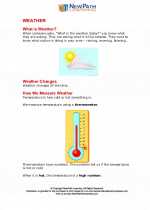
 Activity Lesson
Activity Lesson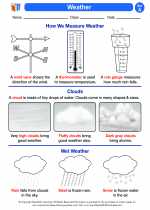
 Worksheet/Answer key
Worksheet/Answer key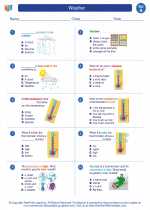
 Worksheet/Answer key
Worksheet/Answer key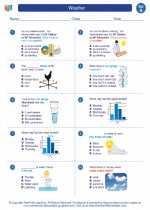
 Worksheet/Answer key
Worksheet/Answer key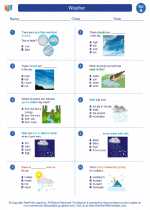
 Worksheet/Answer key
Worksheet/Answer key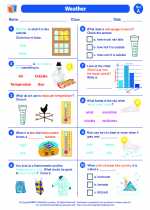
 Vocabulary/Answer key
Vocabulary/Answer key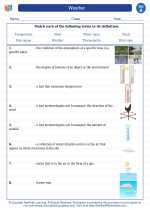
 Vocabulary/Answer key
Vocabulary/Answer key